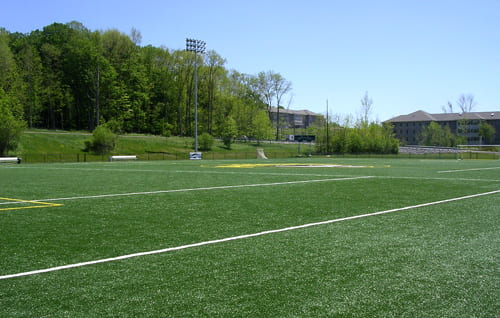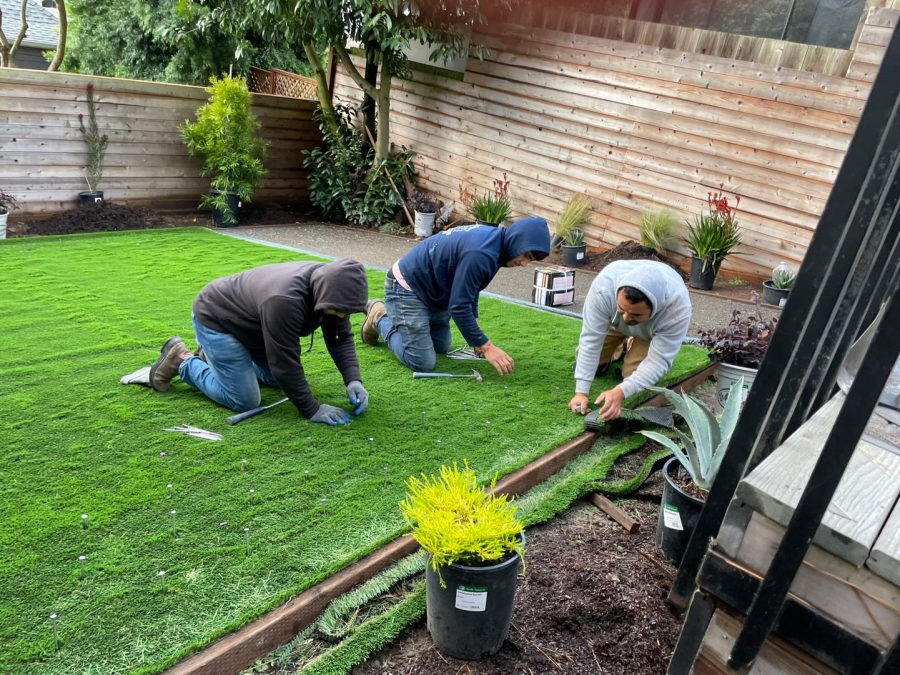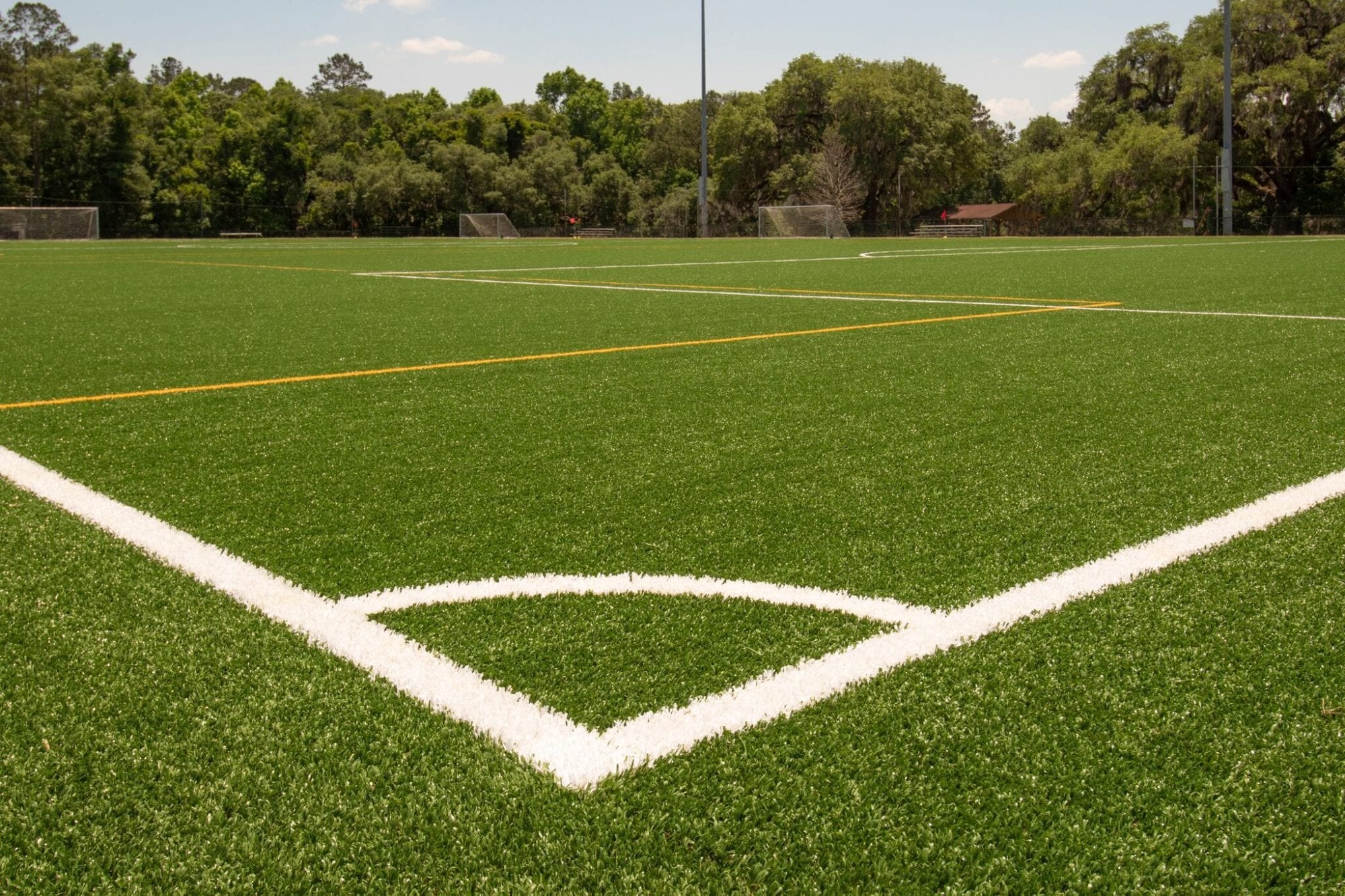Find Reputable Artificial Turf Companies Phoenix for Your Outdoor Needs
Find Reputable Artificial Turf Companies Phoenix for Your Outdoor Needs
Blog Article
Delve Into the Environmental Conveniences of Opting for Artificial Lawn Solutions
The fostering of fabricated lawn solutions presents an engaging chance to resolve pushing ecological challenges. By significantly lowering water use and reducing the application of dangerous chemicals, these options not only promote sustainable landscape design yet additionally protect local communities.
Water Preservation Conveniences
One of the most considerable benefits of fabricated turf is its capacity to save water. In contrast, artificial lawn does not require watering, substantially lowering the general demand for water sources.
By removing the requirement for normal watering, synthetic grass adds to sustainable landscape techniques and assists minimize the ecological impact of extreme water intake. The conservation of water prolongs to the reduction of drainage, which can lead to dirt erosion and waterway air pollution.
In addition, the installation of synthetic grass permits districts and property owners to designate water resources a lot more successfully, concentrating on vital usages such as drinking water and farming. The change in the direction of synthetic grass not just advertises responsible water usage but also aligns with more comprehensive environmental goals targeted at protecting natural deposits.
As neighborhoods significantly focus on sustainability, the water preservation advantages of synthetic grass provide a compelling case for its adoption in property and industrial landscaping jobs.
Decreased Chemical Usage
The change to synthetic grass significantly decreases the dependence on chemical therapies generally made use of in all-natural lawn upkeep. Traditional turf management generally involves the application of chemicals, plant foods, and herbicides to promote growth and control pests. These chemicals can posture threats to human wellness, neighborhood wildlife, and the environment, adding to dirt and water contamination.
On the other hand, synthetic grass eliminates the demand for these harmful materials. When installed, it calls for marginal maintenance, mainly containing normal cleaning and occasional infill replenishment. This reduction in chemical use not only benefits the instant setting yet additionally adds to wider eco-friendly stability. By reducing the launch of synthetic substances into the ecosystem, synthetic lawn promotes much healthier soil and water supply.
Furthermore, the lack of chemical drainage linked with synthetic grass installations aids safeguard local rivers from air pollution, supporting aquatic life and keeping biodiversity. Artificial turf companies phoenix. As areas increasingly focus on sustainable methods, deciding for artificial grass offers a feasible remedy that aligns with environmental conservation objectives. Through this shift, homeowner can appreciate lush environment-friendly spaces without compromising eco-friendly health, leading the way for a much more sustainable future
Reduced Carbon Footprint

In addition, the installation of synthetic lawn can cause substantial water conservation. Natural grass need significant amounts of water for irrigation, which not only contributes to the carbon impact connected with water removal and treatment but likewise stress neighborhood water resources. In comparison, fabricated lawn needs minimal maintenance, needing no watering, consequently significantly decreasing water usage and its associated power expenses.
In addition, the long life of synthetic grass adds to its reduced carbon influence. With a life-span of approximately 15 years or even more, the requirement for constant substitutes is reduced, causing much less waste and lower power usage in manufacturing and disposing of traditional grass alternatives. Overall, synthetic grass offers a sustainable choice for ecologically conscious landscaping.
Habitat Preservation
Environment conservation is a crucial consideration in the debate over landscaping selections, specifically when comparing artificial lawn to all-natural lawn. Natural yard yards usually need considerable upkeep, including the usage of pesticides, plant foods, and herbicides, which can negatively influence neighborhood environments. These chemicals can leach right into the soil and rivers, hurting indigenous plants and fauna and interfering with local environments.
In contrast, synthetic grass presents a chance to lower the environmental impact of landscaping. By going with synthetic lawn, homeowners can lessen the disruption of all-natural environments connected with standard yard care methods. Synthetic lawn gets rid of the demand for harmful chemicals, consequently protecting close-by wildlife and preserving the honesty of surrounding ecosystems. The installment of synthetic grass can lead to the conversion of previous yard locations right into even more biodiverse landscapes, such as pollinator gardens or native plant areas, which can support neighborhood wildlife.
Eventually, the transition to synthetic grass not just webpage preserves water and decreases upkeep initiatives however likewise cultivates an extra unified connection between human activities and the all-natural environment, promoting environment conservation at the same time.
Long-Term Sustainability
Long-term sustainability is a vital variable in examining the advantages of synthetic grass over typical grass yards. Among the most considerable benefits of synthetic grass is its toughness; it can last as much as 15-20 years with very little maintenance, whereas all-natural lawn requires constant reseeding and substitute. This durability reduces the demand for continuous sources, such as water, plant foods, and pesticides, which are important for keeping a healthy yard lawn.
In addition, synthetic grass adds to a reduction in carbon discharges related to yard care devices. Typical grass frequently call for gas-powered mowers, trimmers, and blowers, every one of which add to air pollution. Arizona turf. On the other hand, synthetic grass eliminates the requirement for such tools, promoting a cleaner setting
Furthermore, the manufacturing of artificial grass increasingly utilizes recycled products, boosting its sustainability account. As producers take on environment-friendly practices, the environmental impact of synthetic grass continues to lessen.

Conclusion
The fostering of synthetic turf remedies provides substantial environmental advantages, consisting of substantial water preservation, decreased dependence on damaging chemicals, and a lower carbon footprint. In addition, synthetic grass aids in maintaining all-natural habitats by reducing land disruption and advertising long-term sustainability via the usage of long lasting products. Collectively, these elements underscore the try here capacity of synthetic grass to add favorably to environmental wellness and supply a viable option to conventional landscape design techniques in a significantly resource-conscious globe.
In comparison, artificial turf does not require watering, dramatically minimizing the total demand for water resources. By decreasing the launch of synthetic compounds into the environment, man-made grass promotes much healthier soil and water systems.
Additionally, the installation of fabricated grass can result in significant water preservation. In contrast, artificial grass needs minimal upkeep, needing no watering, consequently considerably decreasing water usage and its my explanation linked energy costs.

Report this page